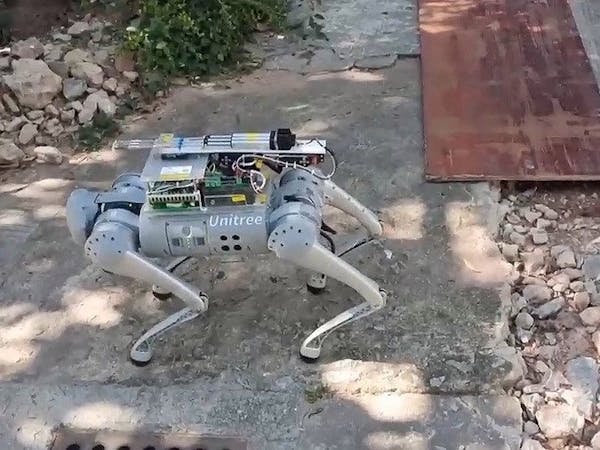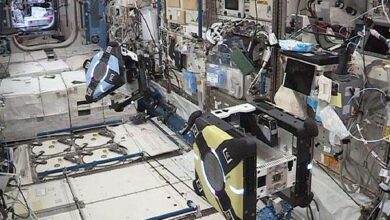This Robotic Sniffer Dog Captures Hazardous Air Samples So You Don’t Have To

Researchers from Jinan University and the Guangdong University of Technology have developed a robotic sniffer dog, capable of performing air sampling on-the-go to hunt down the source of hazardous compounds.
“Various hazardous volatile organic compounds (VOCs) are frequently released into environments during accidental events that cause many hazards to ecosystems and humans,” the researchers explain of the problem they set out to solve. “Therefore, rapid, sensitive, and on-site detection of hazardous VOCs is crucial to understand their compositions, characteristics, and distributions in complex environments. However, manual handling of hazardous VOCs remains a challenging task, because of the inaccessible environments and health risk.”
For less hazardous tasks, a sniffer dog is a go-to solution — leaning on canids’ impressive sense of smell to track down everything from drugs and explosives to electronics and money. When you’re working with gaseous compounds that could prove harmful to Fido, though, that’s not an option — which is where the team’s robot sniffer dog comes in.
Built around a commercial quadrupedal robot platform, the mobile sensing system is equipped with a trio of needle trap devices (NTDs) that can be triggered remotely to capture a sample of the surrounding air. Once all three samples have been collected, and the area from which they were gathered recorded, the robot returns to base to have them analyzed using a portable mass spectrometer — delivering results far more quickly than would be possible using an off-site lab while being safer for the humans in the field than manual sample acquisition.
In testing, the robo-hound was able to detect a range of hazardous VOCs include toxins, chemical warfare agents, and smoke from various burning materials with a detection speed measured in jut minutes. “Our results,” the team claims of its performance, “show that the robot-MS system has excellent performance including safety, controllability, applicability, and robustness under dangerous chemical conditions.”
The team’s work has been published in the journal Analytical Chemistry under closed-access terms.



